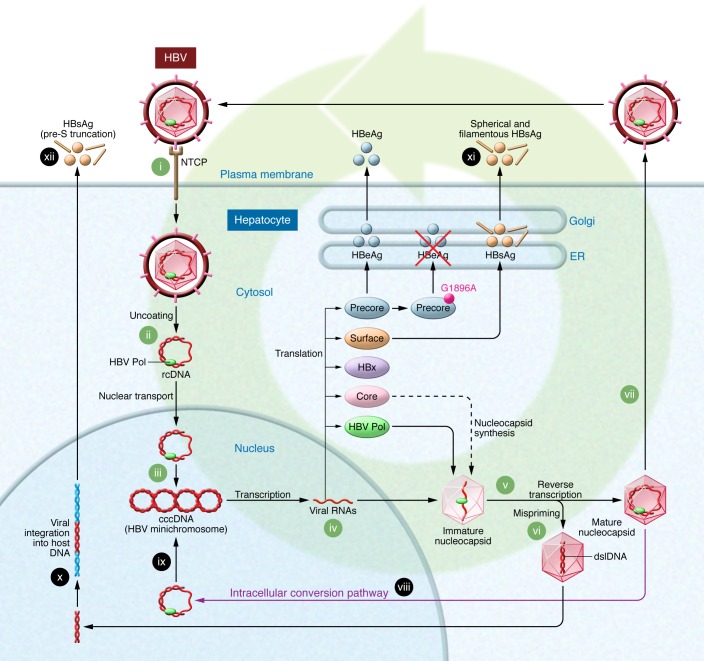Figure 1. The life cycle of HBV.
HBV enters the hepatocyte via binding to the sodium taurocholate cotransporting polypeptide (NTCP) receptor (i). Following removal of the viral envelope and nucleocapsid (ii), viral rcDNA is transported to the nucleus, where it is converted to cccDNA (iii), which is the transcription template for all viral mRNAs (iv). pgRNA is transported to the cytoplasm, where it is encapsidated with HBV Pol and reverse transcribed to rcDNA (v). If mispriming occurs during this process, dslDNA is produced instead of rcDNA (vi). Virions encapsidating rcDNA become enveloped and are secreted from the cell as infectious virions (vii), or rcDNA and dslDNA may be transported to the nucleus (viii), where rcDNA is converted to cccDNA (ix) via the intracellular conversion pathway. The dslDNA may integrate into the host chromosome (x). HBsAg is synthesized from both the viral minichromosome–derived mRNA (xi) and from integrated HBV DNA (xii). The G1896A mutation introduces a premature stop codon and abrogates the production of HBeAg.

